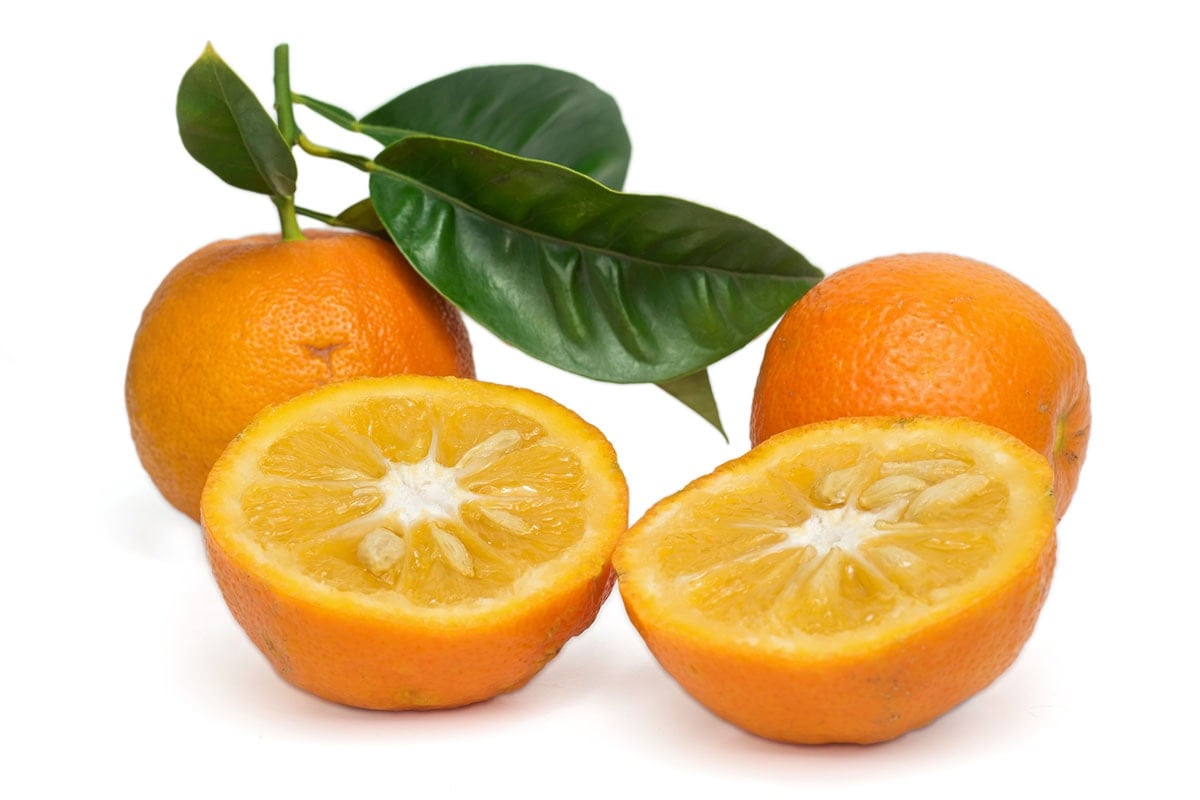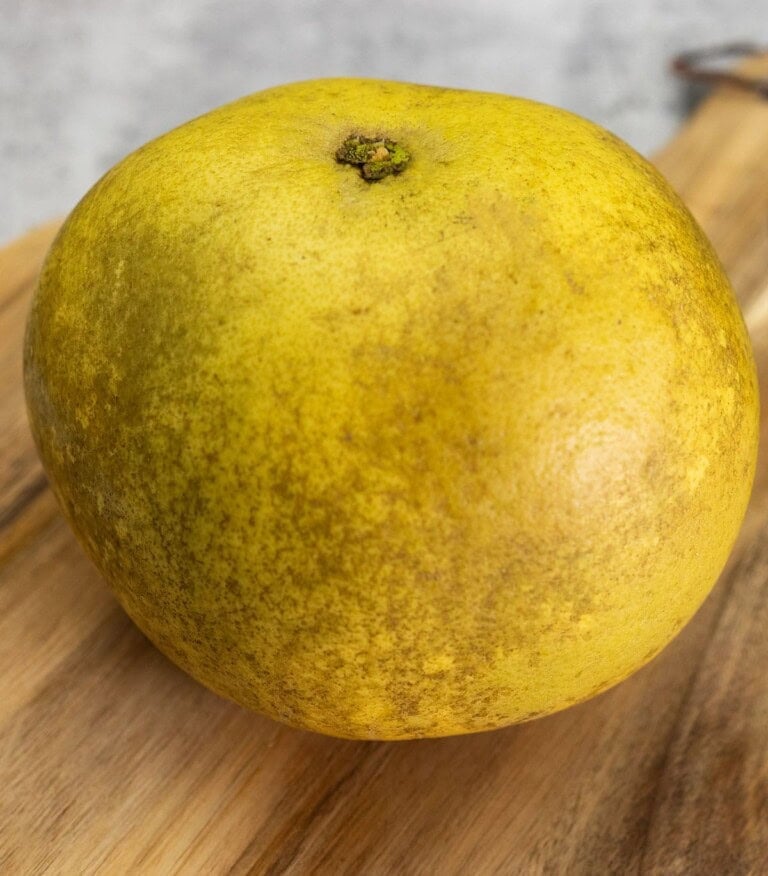Seville Oranges
Today we are gonna talk about Seville oranges. They look quite similar to the regular oranges you can find in the grocery store, so what is the difference?
They are commonly used when a stronger orange flavor is required, such as in marmalade, essential oil, bitters, and pickling. The leaves and fruit also can produce lather, so they can be used as soap. As found with sweet and mandarin oranges, they are full of vitamin C and therefore are amazing for your immune system.

What Are Seville Oranges?
Seville oranges are the variety of bitter oranges that I’m familiar with. Like the sweet orange, Seville oranges are a cross between the pomelo and mandarin orange. They have a stronger sour and bitter flavor, due to it being more acidic, and containing more essential oil.
Because of the flavor, they aren’t normally eaten but are used for cooking purposes, especially in Britain, where it makes the immensely popular marmalade.
Health Benefits of Vitamin C
The most commonly known component of orange is vitamin C, and for good reason. One orange contains roughly just under the amount of vitamin C recommended in a day. This vitamin is vital for your body’s function and benefits so many different systems.
Vitamin C is essential for the production of several compounds, such as collagen, which is good for keeping your skin elastic and is an essential element of connective tissue, muscles, bones, and other organ tissues. Collagen is also necessary for wound healing, meaning that keeping up your vitamin C intake may speed up healing.
It also helps with iron absorption, making it important for anemic individuals who are trying to increase their iron intake through their diet.
The antioxidants in vitamin C are good for preventing cell damage and lowering inflammation. These two benefits can affect or prevent many diseases, including possibly defending against cancer cells.
Vitamin C has many other applications it could be great for. Some examples are diabetes, macular degeneration, allergies, and asthma.
The absolutely most popular benefit of vitamin C is for the common cold and flu. Vitamin C works best if you have it on a daily basis so that your immune system stays strong and can fight off colds.
Other Orange Benefits
Oranges contain no sodium but do have potassium. This is great for circulation and cardiovascular health, through helping to keep your blood pressure lower. They are also full of fiber, which contributes to heart and digestive, and helps with diabetes risk factors by helping control appetite urges.
Oranges also contain thiamin and folate, two essential B vitamins, and choline, a mineral very important for various aspects of brain health.
What To Do With Bitter Orange Peel?
Have you ever seen a recipe that needs orange zest, but you are out of oranges? Make your zest ahead of time!
Bitter orange peel will have that strong orange flavor that, in small quantities, add an amazing layer of flavor to your cooking and baked goods. Peel your oranges, let them dry out for a few days or in a dehydrator, then grind up and store in a cool dry place.
Orange Peel Benefits
So why should you go out of your way to save your orange peels?
Well, the foremost reason is the higher concentration of nutrients and compounds that are found in the peel. Whatever you are using your orange for, the peel will make it stronger.
The peels contain plant compounds called polyphenols, which are micronutrients with a diverse set of benefits and lots of antioxidants. It also contains the fruit’s essential oils, which is where that classic orange scent and flavor comes from.
Bitter Orange Marmalade
Marmalade is a jam-like spread made from citruses, most commonly orange. Instead of being strained, the peel is left in. It is mostly eaten on toast and is especially popular in the UK.
You can take it up a notch by eating with French toast, pancakes, waffles, etc., to help cut the sweetness of those dishes. You could also add it to sandwiches as a tart-sweet spread, or in a breakfast parfait/bowl.
Where Are Seville Oranges Grown?
They are native to southeastern Asia and then spread with the Moors until they reached Europe. After being cultivated in the Spanish city of Seville, the Spaniards brought it with them to St. Augustine, Florida, and across their colonies in the Americas.
It is now commonly found wild all over Florida, the Bahamas, and other Caribbean islands.
When Are Oranges In Season?
Oranges and other citruses mature in the winter months (or as wintry as it gets in Florida). They do well with lots of sunshine, but with moderate temperatures, which is why in America they are mostly grown in Florida and California. Their peak is December through May, and those months are flexible.
Where to Buy Seville Oranges Near Me?
I got my basketful of oranges off of a tree that is in my yard. Since it’s mostly grown for making marmalade and essential oils, it is hard to find in your average grocery store.
Since it grows wild in the southern US, especially Florida, and parts of the Caribbean, Central America, and South America, if you live in these areas, check your local farmer’s markets in early spring, or check near streams in wooded areas for wild trees.
Other Exotic Fruits
- Yellow Passion Fruit
- Yellow Dragon Fruit
- Star Apple
- Ripe Jackfruit
- Loquat
- Barbados Cherries
- Ground Cherries Benefits
- 10 Amazing Benefits Of Noni Fruit
- Otaheite Apples

If you enjoyed this post and would love to see more, join me on Youtube, Instagram, Facebook & Twitter!
Get discounted copies of my cookbook here.
Also please leave a star rating ;-)
Need some encouragement on your Healthier Steps journey?
Join our Facebook groups, sharing lots of delicious vegan and gluten-free recipes, health tips, etc., from our members. Please join us and invite your friends to Gluten-Free and Vegan For Beginners and Vegan Recipes With Love.








